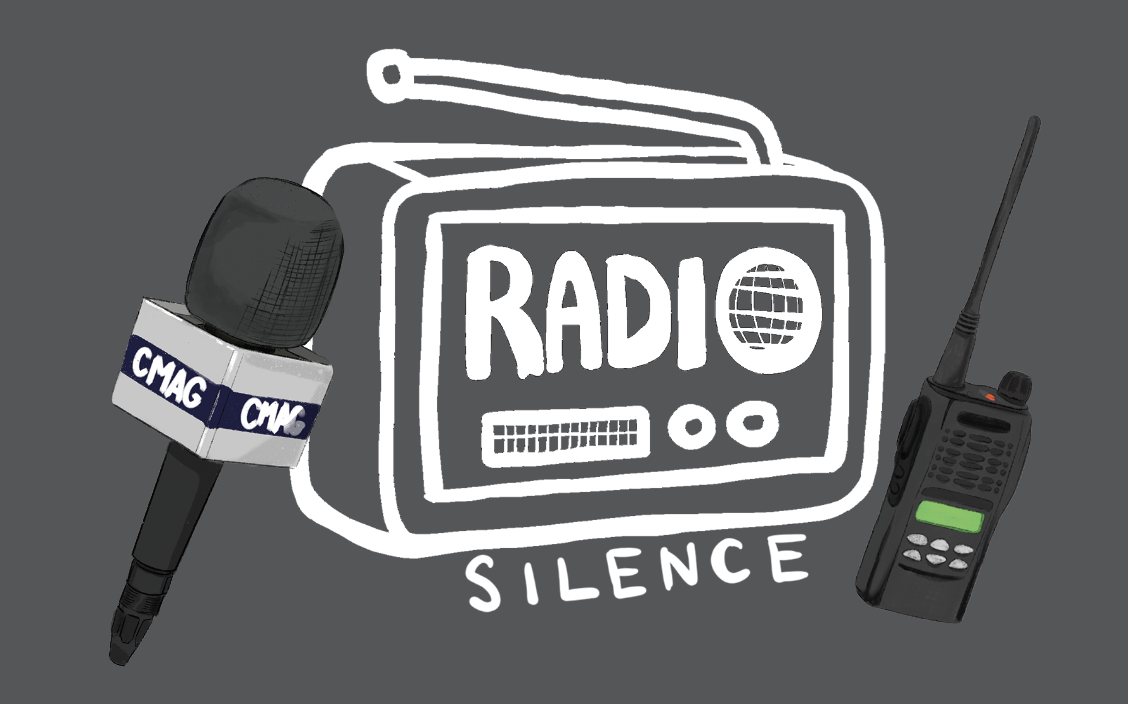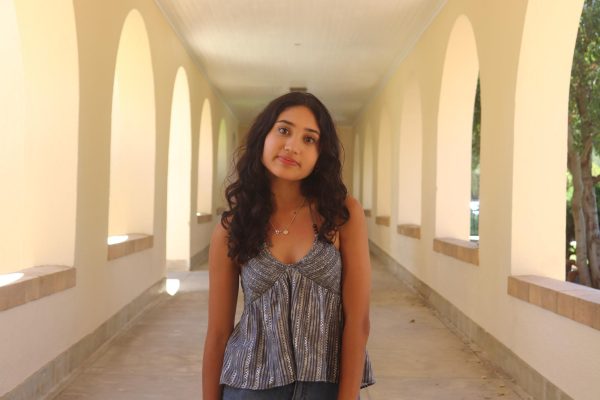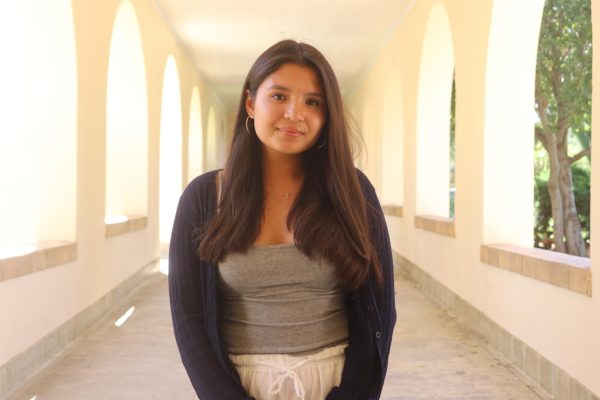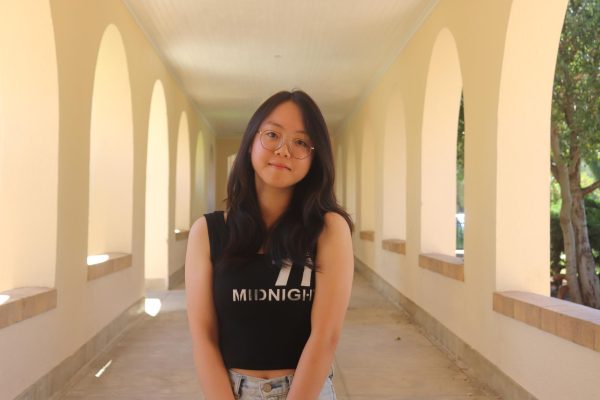The smell of sizzling onions and garlic on the stovetop fills the kitchen, but 11-year-old Lucia Serrano and her eight-year-old brother Eric Serrano barely notice.
“My brother and I always love watching Wild Kratts,” Serrano said.
Curled up on the couch, the two pairs of little eyes widen as Chris and Martin Kratt leap across the screen in their green and blue power suits, transforming into cheetahs, peregrine falcons and even giant squids to fight villains who harm the environment for personal profit.
Their mother, Alejandra Gonzalez, looks up from the stove with a quiet smile peeking from her lips. Gonzalez never grew up watching television, so she never understood the comfort and excitement people found in watching their favorite characters interact through a screen. But seeing her daughter lean forward with wonder during a program on public media — learning and engaging with a show she loves — Gonzalez said she feels a sense of reassurance knowing that her children’s curiosity is nurtured and their minds are engaged in learning.
“PBS, it’s educational and it gives a lot to the kids,” Gonzalez said. “It plants the seed of curiosity and makes them want to know more and explore. … With Netflix and all the streaming services, kids want to watch only fast paced things that overly stimulate their brain, [so] it’s really not learning.”
The Serrano children do not know it yet, but the public media studios bringing their beloved educational programs are struggling to stay afloat. The Rescissions Act, signed into law on July 24, eliminated all $1.07 billion in funding for fiscal years 2026 and 2027 to the Corporation for Public Broadcasting, which funds PBS and NPR stations nationwide. President Donald Trump’s administration enacted the law with the intention to reduce government spending on programs that were deemed uneconomical. Now, stations across the country are scrambling to survive without federal support.
At KQED, San Francisco’s largest public media station, editor-in-chief Ethan Toven is already calculating the damage.
“For KQED, specifically, it [the Rescissions Act] reduced our budget by $8 million,” Toven said. “It clawed back $8 million in annual funding that we were counting on from the Corporation for Public Broadcasting to help us pay for our NPR and PBS programming.”
KQED is not the only broadcaster facing these cuts. Down the coast in Monterey Bay, KAZU lost $264,000 — about 10% of its budget. News Director Amy Mayer recognizes the gravity of the situation.
“As of the end of this month [August], we will no longer be receiving that [Corporation of Public Broadcasting] grant,” Mayer said. “It’s a pretty significant impact.”
James Kass, who is the executive director for KALW, a San Francisco radio station that has served the Bay Area since 1941, said KALW is facing steeper losses.
“We’re losing about $450,000 a year based on these cuts,” Kass said. “We do our best to serve the Bay Area. We’re a medium-sized station, and we’re trying to do our best even in these troubling times.”
What’s more, smaller corporations in rural areas are highly vulnerable due to their smaller donor bases and limited private sponsorship opportunities.
“For a lot of these rural stations, it’s as much as 30%, 50%, 75% of their budget,” Kass said. “A lot of them provide critical services like weather reports and emergency broadcasts. They’re often the places that local people turn to because there’s no other local news source. Many of these rural stations are in danger of shutting down.”
Smaller programs and rural stations face the highest risk of shutting down completely. Michael Isip, president of KQED, analyzes the significant impact the Rescissions Act has imposed on communities.
“For smaller stations, federal funding is literally their lifeline,” Isip said. “There has been an analysis done within the system that estimates about 115 public television and public radio stations could close within the next two years.”
News stations keep citizens informed and prepared for emergencies. As more and more stations disappear, communities will continue losing vital infrastructure. While no media outlet out there is perfectly objective, Om Rajan, associate producer of InFocus, argues that multiple local voices create a healthier information ecosystem than silence.
“It’s a lot harder to control the outlook as they [local news stations] could be more biased in some ways, but having a lot of small local news stations can really help people get accurate information,” Rajan said. “Now they all have to shut down because of this defunding policy.”
Closures of these stations are accelerating the U.S’s growing crisis of “news deserts,” a phenomenon where communities are left with minimal or no access to local news. These “deserts,” caused by a decline in news readership and broadcasting necessity, have left millions without essential information, impacting democracy and community cohesion.
“California, the nation’s most populous state [and] the world’s 4th largest economy, is among the top states for local news closures since 2018,” Isip said. “Studies have shown [that] when people do not have access to local news and information, they are less informed, they are less engaged [and] voter turnout declines.”
For Isip, an access to information is not just about the media — it is about democracy itself.
“An informed, engaged, participatory society is really the foundation of a strong democracy and a healthy society,” Isip said. “Instead of thinking about the number of stations we have, we need to ensure that all communities are served with independent, non-commercial media.”
The damage extends far beyond journalism and the preservation of our democracy. Public broadcasting’s other vital role, education, is crumbling as well.
“Part of the mission of PBS, why it was born, was to play that role of public education,” Kass said. “Early programs like ‘Sesame Street’ and ‘Mr. Rogers’ led to things like PBS Kids. [They] were specifically designed to provide educational resources and services to kids who didn’t go to big private schools.”
Underserved communities face the worst of these consequences: Without federal funding, families living in these communities may lose access to free educational programming that a large number of preschoolers rely on.
“Public media, which includes NPR and PBS, is a networked system with more than 1,600 public television and public radio stations that serve about 99% of American households around the country,” Isip said. “These communities rely on public media to stay informed with local news, information and national news. Education is also available for free to the 52% of 3-to 4-year-olds who do not attend formal preschool.”
Most people consider PBS a reliable source of information, even kids are aware of the difference between PBS Kids and other entertainment networks in what values they bring to the table.
“Disney is more adventures and non realistic stuff [while] PBS Kids is educational and has real life issues,” Serrano said.
PBS Kids has served to educate children for nearly 60 years, from “The Magic School Bus” and “Bill Nye the Science Guy” to “Arthur” and “Daniel Tiger”. But these programs offered more than lessons — they built a common ground of values shared across divides. Paly broadcasting teacher and InFocus adviser Rodney Satterthwaite grew up watching PBS Kids and watches his children learn from the same shows he did, yet he worries this shared experience is fading.
“They [my children] love things like ‘Daniel Tiger’s Neighborhood,’ [and] I grew up on ‘Mr. Rogers’ and ‘Sesame Street,’” Satterthwaite said. “The values there — treat people nicely, be kind to each other, share, respect — those shouldn’t be right [conservative] or left [liberal] values. I fear that we’re not going to have that shared system of values anymore. Our country seems to keep fragmenting, and this common experience is disappearing.”
Some argue that private investment could replace government funding to create a more self-sustainable industry, protecting stations from government oversight. But Neel Satyavolu, a junior at Paly and an executive producer of InFocus, sees the danger in this trade-off.
“Public broadcasting gives you more in-depth value,” Satyavolu said. “Most private media companies focus on stocks and investors, so their coverage gets shaped by private interest. You’ve seen major news corporations backing down to Trump because they don’t want to get sued, but public media is crucial.”
Satyavolu also acknowledges the geographical disparities when it comes to media access. While affluent areas maintain multiple news sources, some rural areas rely entirely on public radio and broadcasting.
“In Silicon Valley, we may not notice it enough since we have well-funded cable news here,” Satyavolu said. “Go to rural California, though. There aren’t that many news stations. For people there, it’s probably their only source of news. With all these political changes, these new developments are going to affect a lot of people in rural areas — farmers, for instance, [and] other hard workers. They need some way to be informed.”
With federal support gone, the fate of public media now rests entirely in the hands of consumers. Community members can step up through multiple channels — from advocating on social media to direct financial support.
“Writing about [the potential consequences of these cuts] is definitely a big thing,” Mayer said. “[It’s important to] make more people aware of the kinds of things that would disappear along with public media. This includes re-tweeting, re-sharing or otherwise disseminating things that you see on social media from your local public broadcasters.”
While raising public awareness is vital, Mayer emphasizes that advocacy alone may not be enough to sustain these institutions.
“If you are able, donating to the stations that you listen to is always a bonus,” Mayer said. The goal is that everybody can consume what we have to offer, and those people who are able to will be funding it.”
Though public media will ideally remain free and accessible to all, its survival increasingly depends on those with means of stepping forward. The stations’ membership models ask those who can pay to help provide free access to everyone.
“Public media in the United States is public,” Toven said. “We get some federal funding, but really it’s public in that you and I become members and decide this is valuable enough for us to contribute $10 or $5 a month. … We’re trying to convince our audience that this is important and worth paying for.”
KQED is made up of more than 252,000 members with contributions and donations making up 16% of their budget.
“So, if we can continue to deliver on our public service, I know we’ll be able to earn and re-earn the trust, the faith, the belief, the financial support of our community,” Isip said. “It’s really the fact that we’re powered by the community, and [KQED being] an essential service that gives me hope.”
Time is in continuous motion. The people who supported the development of public media are only getting older and older, and the majority of the loyal traditional-broadcasting upholders cannot fundamentally sustain this system forever.
“Our core audience [and] our core supporters are getting older, [being] 55 and older, and [they] generally use KQED television and KQED radio,” Isip said. “We need to develop the next generation audience, the next generation supporters, who are digital native, [who] want experiences, want different forms of content and different ways of storytelling”
In addition to donations, stations like KQED are considering more self-sustainable solutions to replace the lost federal funding. This includes a wide range of solutions from corporate partnerships to shared resources among stations.
“Partnerships, formal collaborations and consolidations are important: We think of ourselves as public interest journalism,” Isip said. “We combine forces to generate the kind of information and programs that audiences need.”
Despite these government decisions, public broadcasting is far from disappearing, according to Isip.
“Let me first say that [loss of] federal funding is a setback for public media; it’s not the end of public media, [and] it’s not the end of KQED,” Isip said. “And I’ll also share with you that [previous] federal funding actually accelerated what was already needed. We need to do more with less.”
Public broadcasting in the United States was born from the belief that every democracy requires informed citizens. Almost 60 years later, this belief might be facing its greatest challenge yet. The next generation deserves the same access to education, information and shared values that have shaped previous ones. The question here is not whether public media will survive, but whether Americans will take action to preserve it.
“The future of public media depends on how people in the community step up,” Kass said. “Show them the value of independent journalism, the value of entertainment that’s not profit-driven, but impact-driven.”











